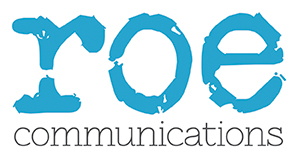Relationships are key for business schools that want to embark upon media relations.
Here at Roe Comms, we’ve been engrossed by the latest Season of Bridgerton, Netflix’s Regency smash hit. It follows eight Bridgerton siblings searching for advantageous matches on the unforgiving London marriage mart.
There’s much to love about Bridgerton, from scenic sets to gorgeous costumes, spellbinding romance to Society scandals and captivating characters.
Whilst its historical accuracy has been much-debated, you cannot argue with its success – the latest series racking up 25 million views worldwide.
We know that Bridgerton seems far removed from business school PR, but in the spirit of taking inspiration from different places, we decided to see whether any lessons could apply to our work.
So whether you are team KANTHONY or POLIN, read on for our (tongue-in-cheek) lessons for media relations from Bridgerton.
1. Research is key
Like the ambitious Mamas of the ton, it pays to research your target audience.
In Series One, for example, Lady Violet, the matriarch of the Bridgerton household, shows an impressive recall of the titles, land and income of all of her daughter’s suitors.
Similarly, business schools wanting to woo journalists should invest time in getting to know what they do and don’t cover.
Sounds simple? But you would be surprised how many organisations still pitch generic content to all journalist targets.
Google journalists’ interests and connect with them on X (Twitter) and LinkedIn. Crucially, READ WHAT THEY ARE WRITING. You can’t go in with a pitch unless you understand their interests and who they are writing for.
2. It’s a marathon, not a race
In Bridgerton, romances such as Daphne and Simon or Antony and Kate, develop over a long time and a series of different occasions.
So it is with journalist relationships.
Imagine you were at a party, talking to someone for the first time. You almost certainly wouldn’t launch in with a pitch from the get-go.
FACT: It takes time for journalists to a) get to know you and b) trust you.
Take an interest in what they write about and try to be helpful, not pushy. Only go to them with useful information and genuine stories rather than sales material.
Or, as Daphne found in Season One of Bridgerton, ask someone with good contacts (in this case, the Queen) to introduce you.
3. Show how you are different
In Bridgerton, costumes and jewellery play a big part in how the young women (and gentlemen) present themselves to society.
Choose ordinary or old-fashioned clothes (as Penelope Featherington finds in Seasons One and Two), and find yourself confined to being a wallflower.
Similarly, attracting journalists takes some thought.
So how can you stand out?
Many schools look and feel the same. Can you dig deep to find out what makes your school different? And provide stories to show it in practice?
Can you provide an authentic perspective on current trends? Using tools such as Google Trends or Reddit will give you an idea of what people are discussing now.
Be selective. 50 per cent of journalists get over 100 pitches a week. Putting out too many stories risks irritating them or at worst, alienating them altogether.
Like the ladies of the ton, selecting your best jewels is far better.
4. Honesty is the best policy
If there’s one thing you can be sure of in Bridgerton, it’s that any secrets will be exposed (often by Lady Whistledown).
We’ve said it above, but being approachable and authentic will carry you a long way in building journalist relationships. Gossiping or being unhelpful will not endear you to people, as Cressida Cowell finds to her detriment in Bridgerton.
Journalists have a job to do. They are not there to trick you, so be honest and helpful. Ensure that your spokespeople are well-prepared for interviews (especially when it comes to trickier questions), and get back to journalists when you say you will.
All these things will build goodwill and a productive, long-term relationship with the media!
Until next time, dearest gentle reader.


